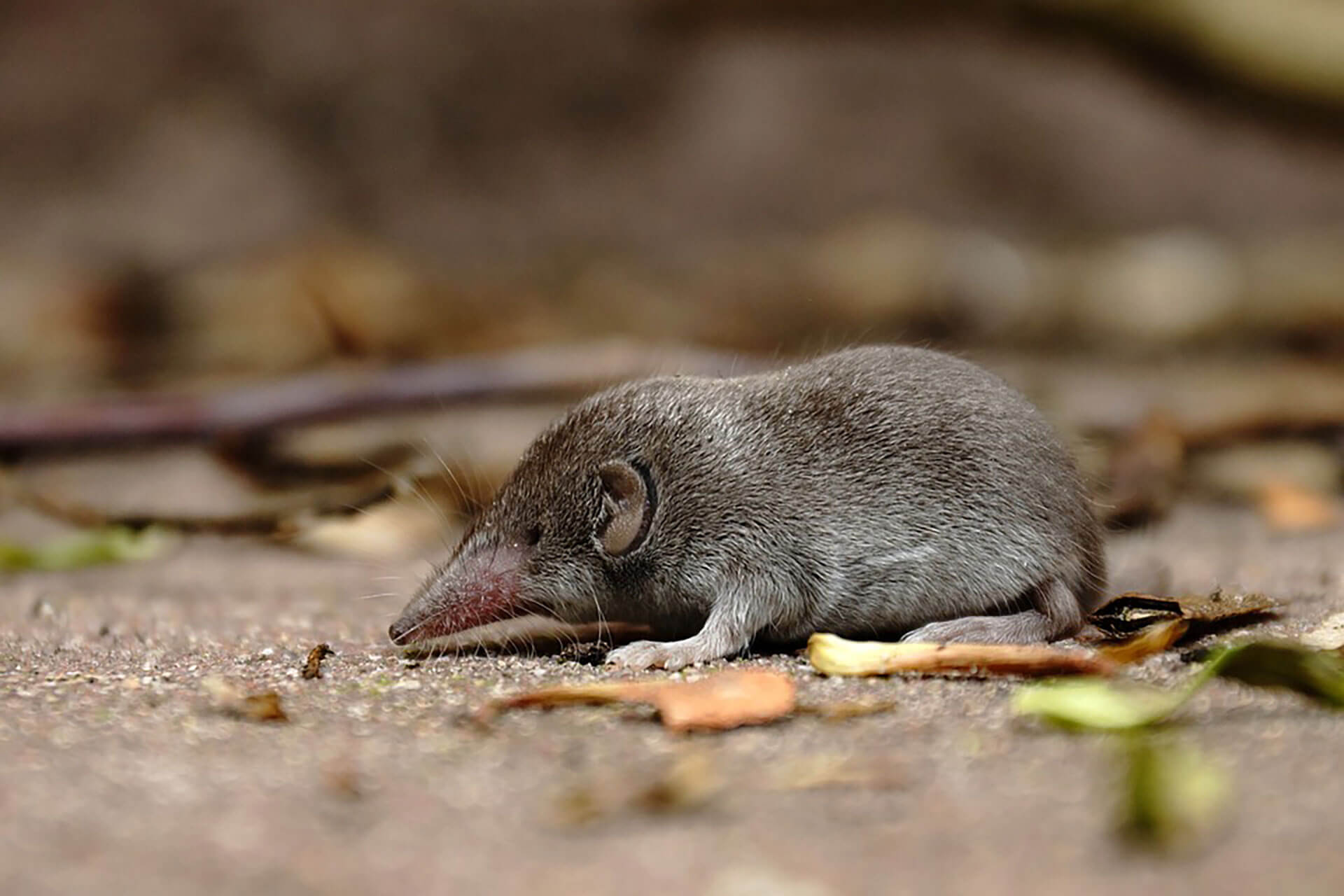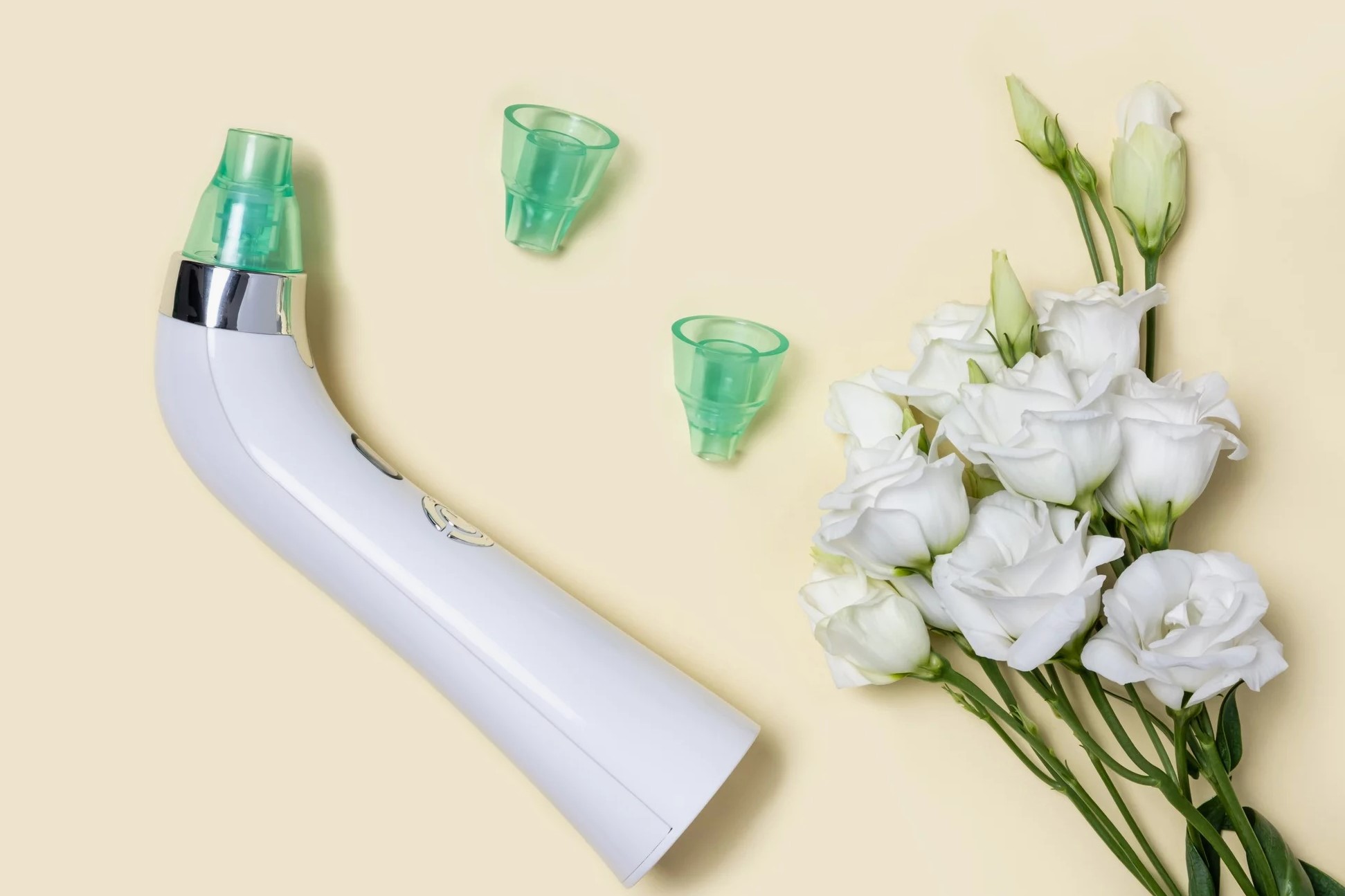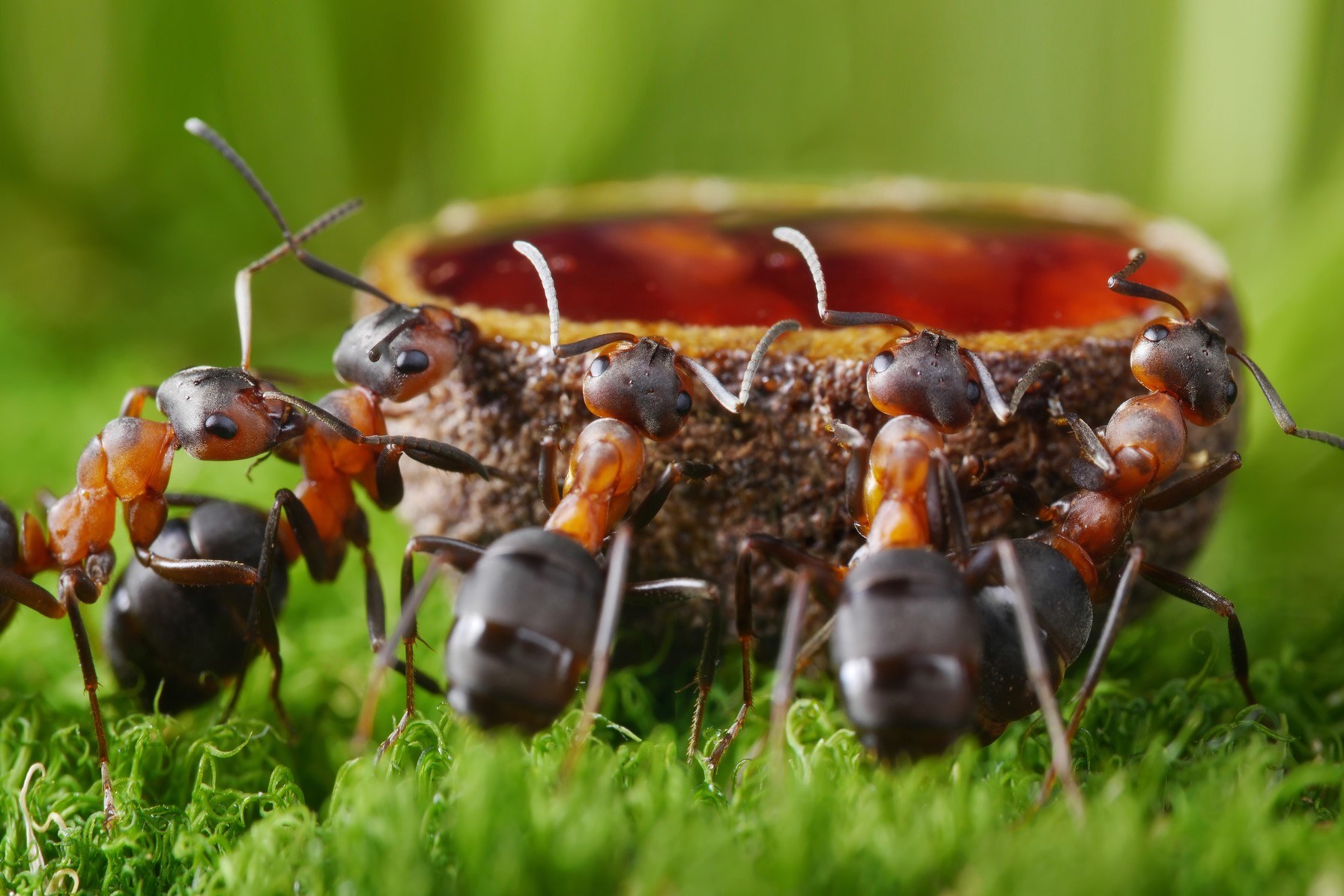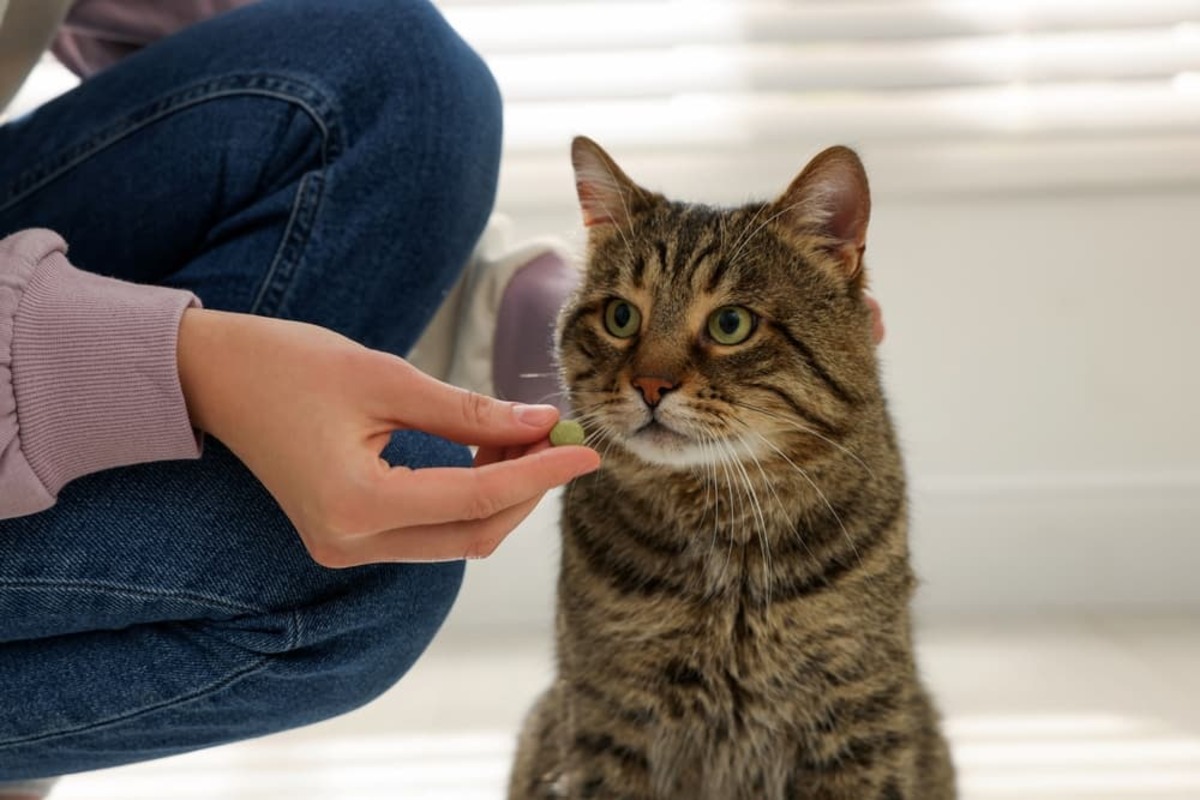Home>Home and Garden>Unwanted Shrew Invades Home: Discover The Ultimate Solution


Home and Garden
Unwanted Shrew Invades Home: Discover The Ultimate Solution
Published: February 8, 2024
Are you dealing with an unwanted shrew invading your home? Find the ultimate solution for your home and garden with our expert tips and advice. Keep your space shrew-free today!
(Many of the links in this article redirect to a specific reviewed product. Your purchase of these products through affiliate links helps to generate commission for Noodls.com, at no extra cost. Learn more)
Table of Contents
Introduction
Dealing with an unwanted shrew invasion is a common challenge for many homeowners. These small, mouse-like creatures can quickly become a nuisance, causing damage and spreading unease in the household. Understanding the signs of shrew infestation, the problems they can cause, and the available solutions is crucial for effective shrew control.
In this comprehensive guide, we will delve into the world of shrews, exploring their behavior, the telltale signs of infestation, and the problems they can create in your home. We will also examine the common solutions that homeowners often turn to and their limitations. Finally, we will unveil the ultimate solution for effective shrew control, providing you with the knowledge and tools to reclaim your home from these unwanted pests.
So, if you've ever found yourself frustrated by the presence of shrews in your living space, or if you're simply looking to arm yourself with the knowledge to prevent such an invasion, you've come to the right place. Let's embark on this journey to discover the ultimate solution for shrew control and regain the peace and comfort of your home.
Understanding the Unwanted Shrew
Shrews are small, mouse-like mammals that belong to the family Soricidae. Despite their diminutive size, these creatures can be a major nuisance when they invade homes and gardens. Known for their rapid movements and voracious appetites, shrews are primarily active during the night, making them elusive and challenging to detect.
These creatures have a pointed snout, tiny eyes, and velvety fur, which allows them to navigate through narrow spaces with ease. Their keen sense of smell and sharp hearing make them adept hunters, preying on insects, earthworms, and even small vertebrates. Shrews are also known for their high metabolic rate, requiring them to consume large amounts of food in proportion to their body size.
In the wild, shrews play a vital role in controlling insect populations, making them beneficial for ecosystems. However, when they infiltrate human habitats, they can wreak havoc. Their tendency to burrow and create intricate tunnel systems can compromise the structural integrity of gardens and even the foundation of buildings. Additionally, shrews are known to gnaw on roots, bulbs, and seeds, posing a threat to the health of plants and the overall aesthetic of gardens.
Understanding the behavior and habits of shrews is essential for effective control and prevention. By familiarizing ourselves with their characteristics and tendencies, we can develop strategies to deter them from encroaching on our living spaces. In the following sections, we will delve deeper into the signs of shrew infestation, the problems they can cause, and ultimately, the ultimate solution for effective shrew control.
Signs of Shrew Infestation
Detecting the presence of shrews in your home or garden requires a keen eye for subtle indicators. While these elusive creatures may not always reveal themselves directly, certain signs can serve as red flags for a potential infestation. By recognizing these cues, you can take proactive measures to address the issue before it escalates.
-
Sightings: Although shrews are primarily nocturnal, occasional daytime sightings may occur, especially if their habitat has been disturbed. If you notice small, mouse-like creatures darting across your property, it could indicate a shrew infestation.
-
Tunnels and Burrows: Shrews are adept at creating intricate tunnel systems, often hidden beneath the soil or in densely vegetated areas. Look for small openings in the ground, particularly near garden beds or the foundation of your home. These tunnels may serve as pathways for shrews to navigate and forage for food.
-
Nesting Materials: Shrews construct nests using a variety of materials, including grass, leaves, and shredded fabric. If you come across small, compact nests in secluded corners of your property, it could signal the presence of shrews.
-
Gnaw Marks: Shrews have a penchant for gnawing on roots, bulbs, and seeds, leaving behind distinctive bite marks on vegetation. Keep a close eye on your garden plants for signs of damage, such as irregular gnawing patterns and partially consumed foliage.
-
Unusual Odors: Shrews possess scent glands that they use for marking their territories. A strong, musky odor emanating from certain areas of your home or garden may indicate the presence of shrews, especially in confined spaces where they are more likely to leave their scent trails.
By remaining vigilant and attentive to these signs, you can promptly address a potential shrew infestation and prevent further damage to your property. In the following sections, we will delve into the problems caused by shrews and explore the common solutions available, shedding light on the limitations of existing methods and paving the way for the ultimate solution: effective shrew control.
Problems Caused by Shrews
The presence of shrews in a home or garden can lead to a host of problems, ranging from structural damage to the destruction of vegetation. Understanding these issues is crucial for implementing effective shrew control measures and mitigating the impact of infestation.
Garden Devastation
Shrews are voracious eaters, with a particular fondness for insects, earthworms, and plant matter. In a garden setting, their relentless foraging can result in significant damage to vegetation. These tiny creatures can wreak havoc on delicate roots, bulbs, and seeds, leading to stunted growth and compromised plant health. The intricate tunnel systems they create while burrowing can disrupt the soil structure, further impeding the growth of plants and flowers.
Structural Compromise
Beyond the garden, shrews' burrowing behavior poses a threat to the structural integrity of outdoor spaces and even buildings. Their tunneling activities can undermine the stability of garden beds, pathways, and retaining walls. In more severe cases, shrews may burrow near the foundation of homes, potentially causing damage to the structural support and posing a risk of water infiltration.
Unsettled Environment
The presence of shrews can create a sense of unease and discomfort in the home environment. Their nocturnal activities may result in unexpected sightings or rustling sounds, leading to a feeling of intrusion and disruption. Additionally, the strong, musky odor produced by shrews as a means of marking their territories can permeate confined spaces, contributing to an unpleasant indoor environment.
Ecological Imbalance
In natural ecosystems, shrews play a vital role in regulating insect populations, contributing to the balance of the ecosystem. However, when they encroach upon human habitats, their unchecked presence can disrupt this balance, leading to an overabundance of certain insects and potential ecological imbalances.
By recognizing the problems caused by shrews, homeowners can take proactive steps to address and mitigate these issues. In the subsequent sections, we will explore the common solutions often employed for shrew control, shedding light on their limitations and paving the way for the ultimate solution: effective shrew control.
Common Solutions and Their Limitations
Trapping and Removal
One of the traditional methods for addressing shrew infestations is trapping and removing the creatures from the affected area. This approach typically involves setting up baited traps in strategic locations where shrew activity has been observed. While trapping can yield immediate results by capturing individual shrews, it often proves to be a temporary fix. Shrew populations can rebound quickly, especially if the root cause of their attraction to the area, such as an abundant food source, remains unaddressed. Additionally, trapping and removing shrews may not be a sustainable solution for larger infestations, as it does not address the underlying factors that contribute to their presence.
Repellents and Deterrents
Another commonly employed strategy for shrew control involves the use of repellents and deterrents. These products, which may include chemical sprays, ultrasonic devices, or natural substances, are designed to discourage shrews from frequenting specific areas. While some homeowners may find initial success with these methods, their effectiveness can be inconsistent. Shrews may adapt to the presence of repellents over time, rendering them ineffective. Moreover, the use of chemical-based repellents raises concerns about the potential impact on the surrounding environment and non-target species. Natural deterrents, while safer, may not provide a robust barrier against determined shrew populations.
Habitat Modification
Modifying the habitat to make it less hospitable to shrews is another approach often considered for shrew control. This may involve clearing dense vegetation, reducing potential food sources, and implementing landscaping changes to discourage shrew activity. While habitat modification can contribute to creating an environment less conducive to shrews, it may not be a foolproof solution. Shrews are adaptable creatures and may find alternative food sources or nesting sites within the modified habitat. Additionally, extensive habitat modifications may not be feasible for all homeowners, especially in larger outdoor spaces.
Chemical Control
In some cases, chemical control methods, such as the use of rodenticides, may be employed to address shrew infestations. While these products can be effective in reducing shrew populations, they come with notable limitations and potential risks. Rodenticides pose concerns for non-target wildlife and pets, and improper use can lead to unintended environmental consequences. Furthermore, the use of chemical control methods does not address the root cause of the infestation, potentially leading to recurring issues if the underlying attractants remain unaddressed.
Integrated Pest Management
Integrated pest management (IPM) approaches aim to address shrew infestations through a combination of strategies, including trapping, habitat modification, and targeted use of chemical control methods. While IPM can offer a comprehensive approach to shrew control, its success relies heavily on thorough implementation and ongoing monitoring. Homeowners may find it challenging to effectively execute IPM without professional guidance, and the complexity of this approach may limit its accessibility and practicality for some individuals.
In the subsequent section, we will unveil the ultimate solution for effective shrew control, providing homeowners with a sustainable and comprehensive approach to addressing shrew infestations.
The Ultimate Solution: Effective Shrew Control
When it comes to addressing shrew infestations in a comprehensive and sustainable manner, the ultimate solution lies in adopting an integrated approach that combines proven techniques with modern innovations. Effective shrew control encompasses a multi-faceted strategy that targets the root causes of infestation while minimizing the impact on the surrounding environment.
Central to effective shrew control is the implementation of habitat modification measures. By strategically altering the landscape and environmental conditions, homeowners can create an inhospitable environment for shrews, discouraging their presence. This may involve reducing potential food sources, such as insects and earthworms, and eliminating harborage sites by decluttering outdoor spaces. Additionally, employing natural barriers and deterrents, such as predator urine or specific plant varieties known to repel shrews, can contribute to creating an environment that is less attractive to these creatures.
In conjunction with habitat modification, targeted trapping and removal can be employed to manage existing shrew populations. By strategically placing humane traps in areas of high shrew activity, homeowners can effectively reduce the immediate impact of infestation. However, this approach is most effective when integrated with other control measures to address the underlying factors that attract shrews to the area.
Furthermore, the utilization of modern advancements in pest control technology can enhance the effectiveness of shrew control efforts. Ultrasonic devices designed to emit sound frequencies that are disruptive to shrews' sensitive auditory systems can serve as a non-invasive deterrent, creating an environment that is less conducive to their presence. These devices are safe for humans and pets while offering a long-term solution to shrew control.
An essential component of effective shrew control is ongoing monitoring and maintenance. By regularly assessing the effectiveness of control measures and making necessary adjustments, homeowners can ensure sustained success in managing shrew infestations. Additionally, maintaining a clean and well-maintained outdoor environment can contribute to minimizing the factors that attract shrews, further reinforcing the effectiveness of control efforts.
By embracing the ultimate solution for effective shrew control, homeowners can reclaim their living spaces from the intrusion of these unwanted pests. This integrated approach not only addresses the immediate concerns posed by shrew infestations but also establishes a foundation for long-term prevention and a harmonious coexistence with the surrounding ecosystem.
Implementing the Ultimate Solution
Implementing the ultimate solution for effective shrew control requires a proactive and holistic approach that encompasses various strategies aimed at mitigating the factors that attract and sustain shrew populations. By integrating habitat modification, targeted trapping and removal, and modern pest control technology, homeowners can effectively address shrew infestations while minimizing the impact on the surrounding environment.
Habitat Modification
The first step in implementing the ultimate solution involves modifying the habitat to create an environment that is less conducive to shrews. This may include reducing potential food sources by implementing natural pest control methods to manage insect and earthworm populations. Additionally, clearing cluttered outdoor spaces and eliminating potential harborage sites can discourage shrews from establishing themselves in the area. Employing natural barriers and deterrents, such as predator urine or specific plant varieties known to repel shrews, can further contribute to creating an inhospitable environment for these creatures.
Targeted Trapping and Removal
In conjunction with habitat modification, targeted trapping and removal can be employed to manage existing shrew populations. Humane traps strategically placed in areas of high shrew activity can effectively reduce the immediate impact of infestation. It is essential to regularly monitor and relocate captured shrews to ensure that the population is effectively managed. This approach, when integrated with habitat modification, addresses the immediate presence of shrews while targeting the underlying factors that attract them to the area.
Utilization of Modern Advancements
Leveraging modern advancements in pest control technology can enhance the effectiveness of shrew control efforts. Ultrasonic devices designed to emit sound frequencies disruptive to shrews' sensitive auditory systems can serve as a non-invasive deterrent. These devices, safe for humans and pets, create an environment that is less conducive to shrew presence, offering a long-term solution to shrew control. Integrating these innovative technologies into the ultimate solution reinforces the comprehensive and sustainable nature of the approach.
Ongoing Monitoring and Maintenance
An essential component of implementing the ultimate solution is ongoing monitoring and maintenance. Regular assessment of the effectiveness of control measures, coupled with necessary adjustments, ensures sustained success in managing shrew infestations. Additionally, maintaining a clean and well-maintained outdoor environment can contribute to minimizing the factors that attract shrews, further reinforcing the effectiveness of control efforts.
By embracing the ultimate solution for effective shrew control, homeowners can reclaim their living spaces from the intrusion of these unwanted pests. This integrated approach not only addresses the immediate concerns posed by shrew infestations but also establishes a foundation for long-term prevention and a harmonious coexistence with the surrounding ecosystem.
Conclusion
In conclusion, the presence of shrews in a home or garden can pose significant challenges, ranging from structural damage to the destruction of vegetation. Recognizing the signs of shrew infestation and understanding the problems they can cause is crucial for implementing effective control measures. While traditional methods such as trapping, repellents, and habitat modification have been commonly employed, they often come with limitations that hinder long-term success.
The ultimate solution for effective shrew control lies in adopting an integrated approach that combines habitat modification, targeted trapping and removal, and modern pest control technology. By strategically modifying the environment to make it less hospitable to shrews, homeowners can discourage their presence while minimizing the impact on the surrounding ecosystem. This approach addresses the root causes of infestation and establishes a foundation for long-term prevention.
Furthermore, the utilization of modern advancements, such as ultrasonic devices designed to disrupt shrews' auditory systems, enhances the effectiveness of control efforts. Ongoing monitoring and maintenance play a pivotal role in ensuring sustained success in managing shrew infestations, allowing homeowners to reclaim their living spaces from the intrusion of these unwanted pests.
By embracing the ultimate solution for effective shrew control, homeowners can not only address the immediate concerns posed by shrew infestations but also establish a harmonious coexistence with the surrounding environment. This comprehensive and sustainable approach provides a pathway to reclaiming the peace and comfort of one's home while fostering a balanced and thriving ecosystem.
In the battle against shrew invasions, the ultimate solution empowers homeowners with the knowledge and tools to effectively address and prevent infestations, paving the way for a future free from the disruptions caused by these elusive creatures.











